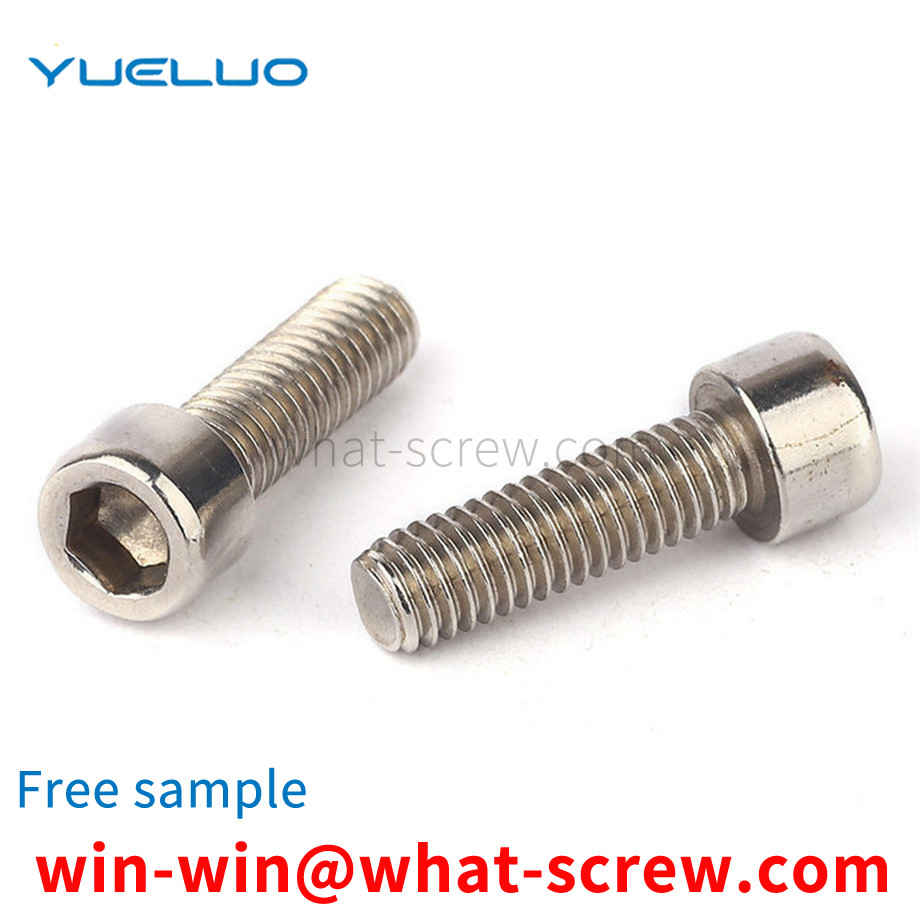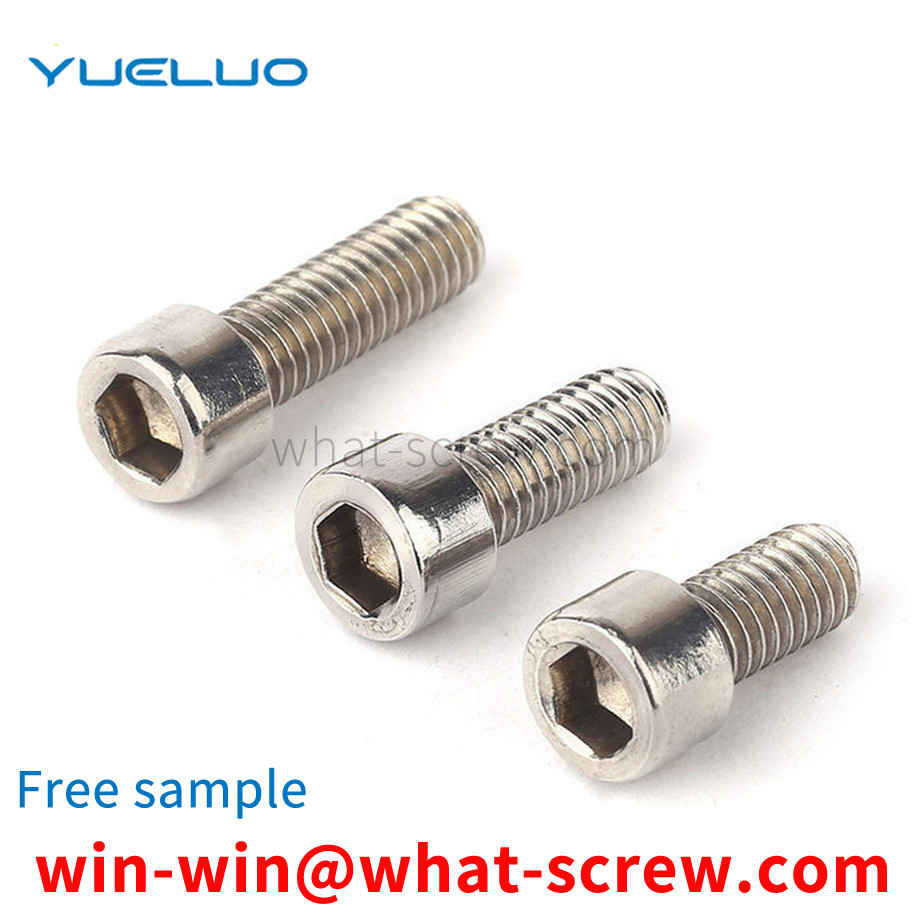Stamping die is a special process equipment for processing materials into parts in cold stamping processing, called cold stamping die. Stamping is to use the die installed on the press to apply pressure to the material at room temperature to make it produce Separation or plastic deformation to obtain the required parts of a pressure processing method, the technology generally used is to make corresponding holes and punches on the template, this method cannot meet the requirements for small batches and short delivery time products , the relative cost is relatively high, so a rivet die structure is required to improve the above problems.
GB/T3103.3-2000 Fastener Tolerance Flat Washers 2 GB/T5286-2001 General Scheme of Flat Washers for Bolts, Screws and Nuts 3 GB/T9074.1-2002 Bolts or Screws and Flat Washers Assemblies 4 GB/T9074. 18-2002 Self-tapping screws and flat washers assemblies 5 GB/T 95-2002 Flat washers C grade 6 GB/T96.1-2002 Large washers A grade 7 GB/T96.2-2002 Large washers C grade 8 GB/T97. 1-2002 Flat washer Class A 9 GB/T97.2-2002 Flat washer chamfered Class A 10 GB/T97.4-2002 Flat washer for screw and washer assemblies 11 GB/T97.5-2002 Flat washer Self-tapping screws and washers assemblies 12 GB/T848-2002 Small washers Class A 13 GB/T5287-2002 Extra large washers Class C 14 GB/T4678.13-2003 Die-casting mold parts Part 13: Push plate washers 15 GB/T4605 -2003 Rolling bearing thrust needle roller and cage assemblies and thrust washers 16 GB/T97.3-2000 Flat washers for pins 17 GB/T18230.5-2000 Flat washers for bolted structures quenched and tempered 18 GB/T9074.5 -2004 Cross recessed small pan head screw and flat washer assembly 19 GB/T9074.20-2004 Cross recessed hexagon head tapping screw and flat washer assembly 20 GB/T3762-1983 Sharp angle sealing washer for ferrule type pipe joint 21 GB/T1231-2006 Specifications for high-strength large hexagon head bolts, large hexagon nuts and washers for steel structures 24 GB/T5649-2008 Lock nuts and washers for pipe joints and washers 27 GB/T10447-2008 Elements and tolerances of semicircular thrust washers for sliding bearings 28 GB/T94.1-2008 Specifications for elastic washers Spring washers 29 GB/T10446-2008 Dimensions and tolerances for full circle thrust washers for sliding bearings 30 GB/ T93-1987 standard spring washer 31 GB/T94.2-1987 elastic washer technical conditions toothed, serrated lock washer 32 GB/T98-1988 stop washer technical conditions 33 GB/T849-1988 spherical washer 34 GB/T850- 1988 Conical Washer 35 GB/T851-1988 Split Washer 36 GB/T852 -1988 Square bevel washer for I-beam 37 GB/T853-1988 Square bevel washer for channel steel 38 GB/T854-1988 Single-ear stop washer 39 GB/T7244-1987 Heavy-duty spring washer 40 GB/T855-1988 Double-ear stop Dynamic washer 41 GB/T7245-1987 Saddle spring washer 42 GB/T7246-1987 Wave spring washer 43 GB/T856-1988 Outer tongue stop washer 44 GB/T858-1988 Stop washer for round nut 45 GB/T859-1987 Light spring washer 46 GB/T860-1987 Saddle elastic washer 47 GB/T861.1-1987 Internal tooth lock washer 48 GB/T861.2-1987 Internal serrated lock washer 49 GB/T862.1-1987 External tooth lock 50 GB/T862.2-1987 External Serrated Lock Washers 51 GB/T955-1987 Wave Elastic Washers 52 GB/T27938-2011 Sliding Bearing Thrust Washers Failure Damage Terms, Appearance Features and Reasons 53 GB/T956.1- 1987 Conical lock washer 54 GB/T956.2-1987 Conical serrated lock washer 55 GB/T28697-2012 Rolling bearing self-aligning thrust ball bearing and self-aligning seat washer Dimensions 56 GB/T9074.2-1988 Cross groove disc Head screw and male serrated lock washer assembly 57 GB/T9074.3-1988 Cross recessed pan head screw and spring washer assembly 58 GB/T9074.4-1988 Cross recessed pan head screw, spring washer and flat washer assembly 59 GB /T9074.7-1988 Cross recessed small pan head screw and spring washer assembly 60 GB/T9074.8-1988 Cross recessed small pan head screw and spring washer and flat washer assembly 61 GB/T9074.9-1988 Cross recessed countersunk Head screw and conical lock washer assembly 62 GB/T9074.10-1988 Cross recessed countersunk head screw and conical lock washer assembly 63 GB/T9074.11-1988 Cross recessed hexagon head bolt and flat washer assembly Parts 64 GB/T9074.12-1988 Cross recessed hexagon head bolt and spring washer assembly 65 GB/T9074.13-1988 Cross recessed hexagon head bolt, spring washer and flat washer assembly 66 GB/T9074.15- 1988 Hexagon head bolt and spring washer assembly 67 GB/T9074.16-1988 Hexagon head bolt and serrated lock washer assembly 68 GB/T9074.17-1988 Hexagon head bolt, spring washer and flat washer assembly 69 GB/T9074 .26-1988 Spring Washers for Assemblies 70 GB/T9074.27-1988 External Serrated Lock Washers for Assemblies 71 GB/T9074.28-1988 Conical Lock Washers for Assemblies 72 GB/T1030-1988 Inner Spherical Washers[1]
The positioning pin is a pin designed to accurately position the two adjacent parts of the mold in a mold composed of two or more parts. It can be seen that the positioning pin plays a positioning role, and the mold must be accurately synchronized when it is closed. product, and the positioning pin can make the upper and lower molds play a role in accurate positioning. In the mold design and manufacture of Yueluo, the positioning pin is one of the most common parts. Since it is only used for positioning between parts, few people will pay too much attention to it. In the cold stamping process of Yueluo, the dimensional accuracy of the blanking parts depends on the size of the working part of the punch and the concave die, and the dimensional difference between them constitutes the blanking die gap. Gap is an important process parameter for die design, and its size has a great influence on the quality of the section of the blanking part, the blanking force, and the life of the die. If the gap is too large, punching burrs will appear in punching; if the gap is too small, secondary cracks will occur in the section and extrusion burrs will appear, which will make the quality of the section after punching unsatisfactory, and a reasonable gap will not only help the punching section. The improvement of quality also contributes to the improvement of the lifespan of the three-tool.
The opening circlip is widely used in many industrial fields and plays a role in limiting the position of the parts. When in use, as long as the circlip is installed in the circlip groove of the part, the position of other matching parts can be effectively limited, so as to avoid the axial displacement of the matching parts. Since some opening circlips do not have circlip pliers installation holes, circlip pliers cannot be used and can only be installed by hand, which not only cannot effectively ensure the installation quality of the circlip, but also limits the efficiency of installation work.
High-strength fasteners must be quenched and tempered according to technical requirements. The purpose of heat treatment and tempering is to improve the comprehensive mechanical properties of fasteners to meet the specified tensile strength value and yield ratio of the product. The heat treatment process has a crucial impact on high-strength fasteners, especially its intrinsic quality. Therefore, in order to produce high-quality high-strength fasteners, advanced heat treatment technology and equipment must be available. Due to the large production volume and low price of high-strength bolts, and the threaded part is a relatively fine and relatively precise structure, the heat treatment equipment is required to have large production capacity, high degree of automation, and good heat treatment quality. Since the 1990s, the continuous heat treatment production line with protective atmosphere has dominated, and the shock bottom type and mesh belt furnace are especially suitable for heat treatment and tempering of small and medium-sized fasteners. In addition to the good sealing performance of the furnace, the quenching and tempering line also has advanced computer control of atmosphere, temperature and process parameters, equipment failure alarm and display functions. High-strength fasteners are automatically controlled and operated from feeding-cleaning-heating-quenching-cleaning-tempering-coloring to offline, which effectively ensures the quality of heat treatment. The decarburization of the thread will cause the fastener to trip before the resistance required by the mechanical properties is reached, which will cause the failure of the threaded fastener and shorten the service life. Due to the decarburization of the raw material, if the annealing is improper, the decarburized layer of the raw material will be deepened. In the process of quenching and tempering heat treatment, some oxidizing gas is generally brought in from outside the furnace. The rust of the bar wire or the residue on the surface of the wire rod after cold drawing will also decompose after being heated in the furnace, and some oxidizing gases will be generated by the reaction. For example, the surface rust of steel wire, which is composed of iron carbonate and hydroxide, will be decomposed into CO₂ and H₂O after heating, thus aggravating decarburization. Studies have shown that the degree of decarburization of medium carbon alloy steel is more serious than that of carbon steel, and the fastest decarburization temperature is between 700 and 800 degrees Celsius. Because the attachments on the surface of the steel wire decompose and synthesize carbon dioxide and water very quickly under certain conditions, if the furnace gas of the continuous mesh belt furnace is not properly controlled, it will also cause excessive decarburization of the screw. When the high-strength bolt is formed by cold heading, the raw material and the annealed decarburized layer not only still exist, but also are extruded to the top of the thread. For the surface of the fastener that needs to be quenched, the required hardness cannot be obtained. Its mechanical properties (especially strength and wear resistance) decreased. In addition, the surface of the steel wire is decarburized, and the surface layer and the internal structure have different expansion coefficients, and surface cracks may occur during quenching. For this reason, during quenching and heating, the top of the thread should be protected from decarburization, and the fasteners whose raw materials have been decarburized should be properly carbonized, and the advantages of the protective atmosphere in the mesh belt furnace should be adjusted to the original carbon-coated parts. The carbon content is basically the same, so that the decarburized fasteners are slowly restored to the original carbon content. The carbon potential is preferably set at 0.42% - 0.48%. The carbon coating temperature is the same as the quenching heating, and cannot be carried out at high temperatures , so as to avoid coarse grains and affect mechanical properties. The quality problems that may occur in the process of quenching and tempering of fasteners mainly include: insufficient hardness in the quenched state; uneven hardness in the quenched state; excessive quenching deformation; quenching cracking. Such problems in the field are often related to raw materials, quenching heating and quenching cooling. Correctly formulating the heat treatment process and standardizing the production operation process can often avoid such quality accidents.
We have many years of experience in the production and sales of screws, nuts, flat washers, etc. The main products are: A-grade dome head screws, GB812, through-hole rivet nuts, ingot hand-tightened nuts and other products, we can provide you with suitable tightening screws for you. Firmware Solutions.



















 Service Hotline
Service Hotline




